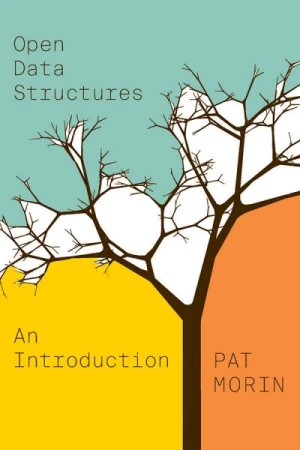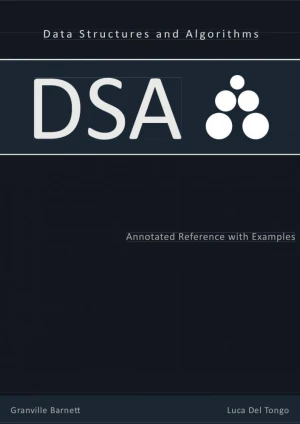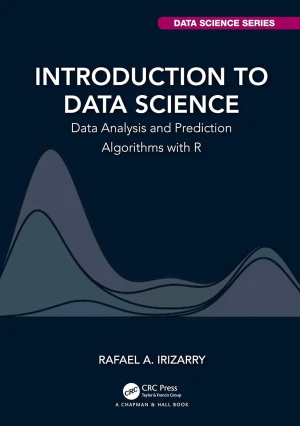Introduction to Autonomous Robots
Mechanisms, Sensors, Actuators, and Algorithms
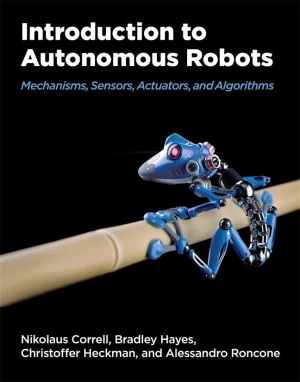
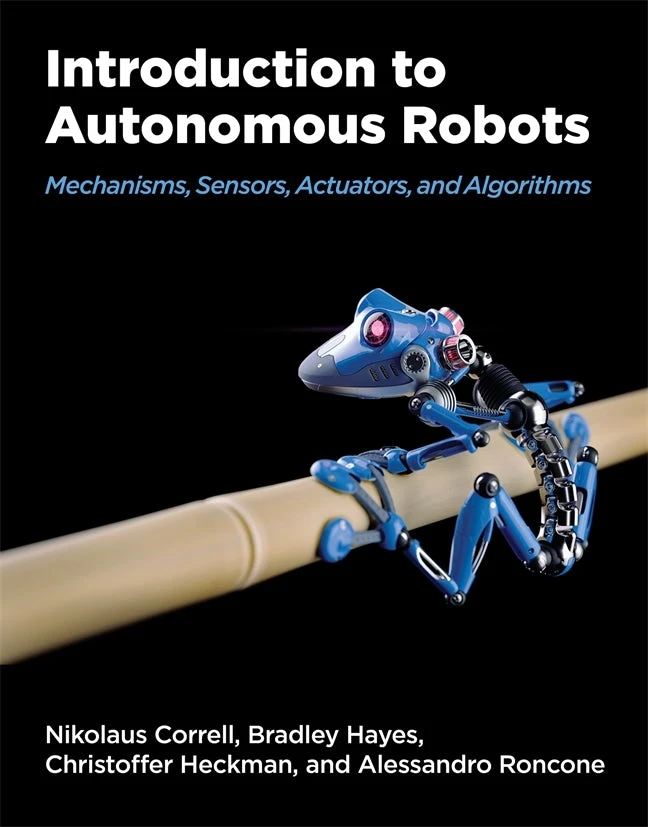
Book Details
| Authors | Nikolaus Correll, Bradley Hayes, Christoffer Heckman, Alessandro Roncone |
| Publisher | MIT Press |
| Published | 2021 |
| Edition | 1st |
| Paperback | 368 pages |
| Language | English |
| ISBN-13 | 9780262047555, 9780262372947 |
| ISBN-10 | 0262047551, 0262372940 |
| License | Creative Commons Attribution-NonCommercial-NoDerivatives |
Book Description
Textbooks that provide a broad algorithmic perspective on the mechanics and dynamics of robots almost unfailingly serve students at the graduate level. Introduction to Autonomous Robots offers a much-needed resource for teaching third- and fourth-year undergraduates the computational fundamentals behind the design and control of autonomous robots. The authors use a class-tested and accessible approach to present progressive, step-by-step development concepts, alongside a wide range of real-world examples and fundamental concepts in mechanisms, sensing and actuation, computation, and uncertainty. Throughout, the authors balance the impact of hardware (mechanism, sensor, actuator) and software (algorithms) in teaching robot autonomy.
Rigorous and tested in the classroom, Introduction to Autonomous Robots is written for engineering and computer science undergraduates with a sophomore-level understanding of linear algebra, probability theory, trigonometry, and statistics. Coverage includes basic concepts in robotic mechanisms like locomotion and grasping, plus the resulting forces; operation principles of sensors and actuators; basic algorithms for vision and feature detection; and an introduction to artificial neural networks, including convolutional and recurrent variants. QR codes in the text guide readers to online lecture videos and animations. The book also features extensive appendices focusing on project-based curricula, pertinent areas of mathematics, backpropagation, writing a research paper, and other topics, and is accompanied by a growing library of exercises in an open-source, platform-independent simulation (Webots).
This book is available under a Creative Commons Attribution-NonCommercial-NoDerivatives license (CC BY-NC-ND), which means that you are free to copy and distribute it, as long as you attribute the source, don't use it commercially, and don't create modified versions.
If you enjoyed the book and would like to support the author, you can purchase a printed copy (hardcover or paperback) from official retailers.
Download and Read Links
Share this Book
[localhost]# find . -name "*Similar_Books*"
Open Data Structures
Offered as an introduction to the field of data structures and algorithms, Open Data Structures covers the implementation and analysis of data structures for sequences (lists), queues, priority queues, unordered dictionaries, ordered dictionaries, and graphs. Focusing on a mathematically rigorous approach that is fast, practical, and efficient, Mor
Data Structures and Algorithms
This book provides implementations of common and uncommon algorithms in pseudocode which is language independent and provides for easy porting to most imperative programming languages. It is not a definitive book on the theory of data structures and algorithms. For the most part this book presents implementations devised by the authors themselves b
Introduction to Data Science
Introduction to Data Science: Data Analysis and Prediction Algorithms with R introduces concepts and skills that can help you tackle real-world data analysis challenges. It covers concepts from probability, statistical inference, linear regression, and machine learning. It also helps you develop skills such as R programming, data wrangling, data vi
An Open Guide to Data Structures and Algorithms
Data encountered in a computer program is classified by type. Common types include integers, floating point numbers, Boolean values, and characters. Data structures are a means of aggregating many of these scalar values into a larger collection of values. An algorithm is an explicit sequence of instructions, performed on data, to accomplish a desir
Building Modern Web Applications With Spring Boot and Vaadin
This guide is a practical introduction to web application development with Spring Boot and Vaadin. It covers the entire development process, from setup to deployment, following a step-by-step approach. You can replicate each section at your own pace as you follow along. The content is suitable for anyone familiar with Java who wants to build a web
Certified Programming with Dependent Types
A handbook to the Coq software for writing and checking mathematical proofs, with a practical engineering focus. The technology of mechanized program verification can play a supporting role in many kinds of research projects in computer science, and related tools for formal proof-checking are seeing increasing adoption in mathematics and engineerin

